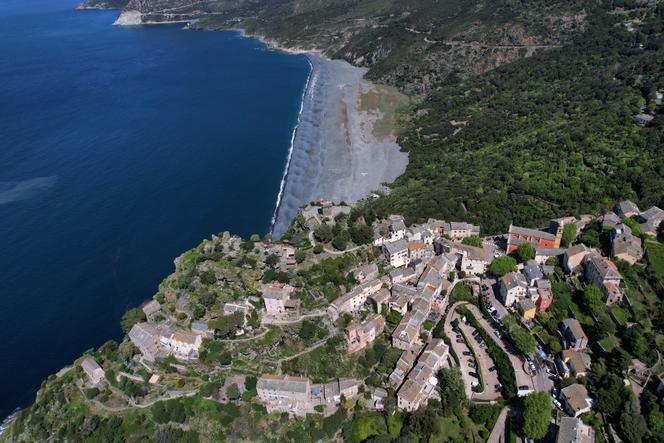


From her white cottage, whose ground floor serves as a gallery, Florence Arrighi, 63, gazed out with a heavy heart over the landscape of Nonza, a village perched on the cliffs of Cap Corse, the northern tip of Corsica. Her gaze followed the staircase leading down from the village to the black beach below, a place she described as her "visceral connection" to the place, where she collects pebbles and sand to create her sculptures and artworks. The shore looked like a Pierre Soulages "outrenoir" painting. "I chose to live in this village, I don't want to see my home turned into an industrial zone," fumed Arrighi, who added she's now at "war."
Like the rest of the local population, the artist discovered that the Canadian mining company Aurania Resources Ltd, through its subsidiary Corsica Ressources, was eyeing the famous black beaches of Nonza and Albo (in the town of Ogliastro). On February 2, its president, Keith Barron, submitted a file to the regional environmental, planning and housing authority (DREAL) to begin exploring and drilling. The goal: to extract sand using magnets in order to recover nickel, a key component for making batteries and electric vehicles.
You have 85.9% of this article left to read. The rest is for subscribers only.
